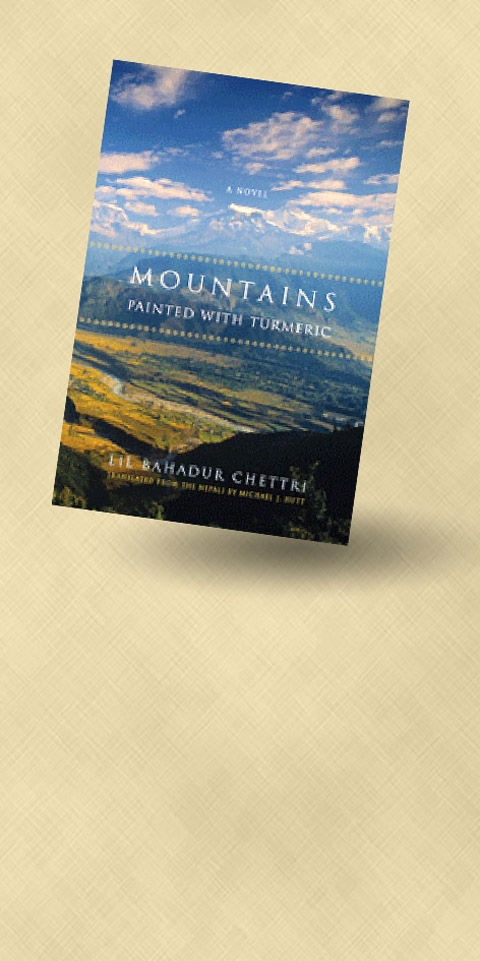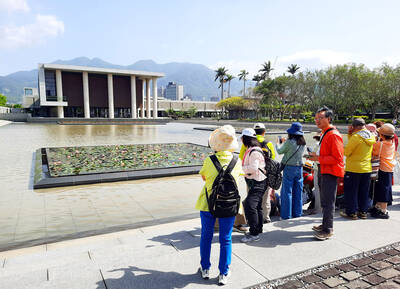You wouldn't imagine there were many novels written in Nepali, but there appear to be quite a few. This one, however, originally known as Basain (meaning something like "location"), is apparently known to every man, woman and child in Nepal. It was first published in 1958, and Michael J. Hutt has given his translation a colorful new title to launch the work in English on the international market.
It's a short novel, fleshed out with some black-and-white photos of Nepal's landscapes, including its steep and terraced foothills. The book tells a sad story of social displacement, a family forced to leave their ancestral village by the combined maneuverings of a greedy moneylender and an imperious local landlord. The story is set against the changing Himalayan seasons, thereby evoking many European narratives in which a beautiful countryside is used as a plaintive backdrop for tragic human lives. The rural novels of Thomas Hardy and Marcel Pagnol immediately come to mind, but there are many more examples.
Given Nepal's extraordinary history over the last 20 years, with running battles between Maoists and forces loyal to the crown, not to mention the scarcely believable events in the royal palace in 2001, it isn't surprising that Nepal's Marxists have been quick to demand an interpretation to Mountains Painted with Turmeric that conforms to their party line. The author, though, writes only that he had "heard of" Marx and Marxism at the time he wrote the book, and that this acquaintance may have contributed to his "impassioned" tone as the story draws to a close.

But, as the translator points out, and various critics in Nepal have commented, the villains of the piece don't in any way suffer for their cruelty. This, then, is a book that resembles classical tragedy in that the desirability of a change in a social order is remote from the author's real concerns. What Lil Bahadur Chettri appears to be concerned to demonstrate is that the events he depicts simply show life is it is, and that this can no more be changed than can the seasons that form the stupendous setting for the events.
Even an English 18th century Tory like Samuel Johnson criticized Shakespeare for not bothering to punish his villains and reward the virtuous sufficiently systematically. There are exceptions, of course, but artists seem to have a near-universal hostility to ideologies of every color, preferring to present the world in all its complexity and cruelty rather than supporting various schemes to change it.
Such concerns, though, are unlikely to bother the reader of what is essentially a simple tale, and something that can easily be read at a sitting. The characters are economically depicted, too - Dhane, the peasant, his wife Maina, his beautiful young sister Jhuma, and the unnamed soldier who seduces her, referred to throughout simply as Rikute (from the English word "recruit") when he isn't being disdainfully called "that corpse."
An interesting aspect of this book is that the author, though of Nepali descent, has lived almost his entire life in Assam, India. He learned about the social life in the hill villages of eastern Nepal from migrant workers he encountered in India, having only a vague memory of it himself. This distance from his or her subject matter is probably an advantage for an author as it allows the imagination to evoke something that has already been simplified by the mind, and all artistic visions are inevitably simplified versions of reality.
It's also fascinating to read how this short novel came to be written. When the author first sat down, nothing whatsoever came to him for days on end. He then wrote it in dribs and drabs, adding another page, then putting the book side for often months at a time. In the original Nepali it was only 70 pages long, yet it took Chettri three years to complete. Prospective authors should be encouraged by this reminder that not all creative personalities are necessarily prolific.
The story reaches its climax when Dhane kills a pregnant buffalo (and hence an especially valuable one) owned by his landlord. What prompts this act of folly is that the landlord's dissolute son, having nothing better to do, has told his father's plowman to let the animal into Danhe's seedbed to trample over the seedlings. When the village court rules that Dahne must pay a fine far in excess of his means, his fate is sealed.
Shortly before this Jhuma has yielded to the soldier's entreaties and as a result become pregnant. In a Nepali context this means total ostracism, and the stage is hence set for the enactment of a double tragedy. One of the potential victims is saved, however, giving the impression that fate is arbitrary as well as unideological.
The translator, Michael J. Hutt, thanks one Larry Hartsell for sending him a copy of his earlier translation of the novel, but this appears never to have been published. Hutt himself is a professor at the School of Oriental and African Studies in London, and also the editor of Modern Literary Nepali: An Introductory Reader.
There are naturally thousands of better novels than Mountains Painted With Turmeric in existence, and if it appeals it will largely be because of its unusual setting. The translation is engaging and accessible, while remaining poised uneasily between the popular and the academic. There are many footnotes, for example, and months are referred to by their Nepali rather than their Western names. This is eminently correct, of course. But had the translator had the courage to disregard his academic standing, and go instead for a more thorough popularization, he might have had a miniature bestseller on his hands.

When the South Vietnamese capital of Saigon fell to the North Vietnamese forces 50 years ago this week, it prompted a mass exodus of some 2 million people — hundreds of thousands fleeing perilously on small boats across open water to escape the communist regime. Many ultimately settled in Southern California’s Orange County in an area now known as “Little Saigon,” not far from Marine Corps Base Camp Pendleton, where the first refugees were airlifted upon reaching the US. The diaspora now also has significant populations in Virginia, Texas and Washington state, as well as in countries including France and Australia.

On April 17, Chinese Nationalist Party (KMT) Chairman Eric Chu (朱立倫) launched a bold campaign to revive and revitalize the KMT base by calling for an impromptu rally at the Taipei prosecutor’s offices to protest recent arrests of KMT recall campaigners over allegations of forgery and fraud involving signatures of dead voters. The protest had no time to apply for permits and was illegal, but that played into the sense of opposition grievance at alleged weaponization of the judiciary by the Democratic Progressive Party (DPP) to “annihilate” the opposition parties. Blamed for faltering recall campaigns and faced with a KMT chair

Article 2 of the Additional Articles of the Constitution of the Republic of China (中華民國憲法增修條文) stipulates that upon a vote of no confidence in the premier, the president can dissolve the legislature within 10 days. If the legislature is dissolved, a new legislative election must be held within 60 days, and the legislators’ terms will then be reckoned from that election. Two weeks ago Taipei Mayor Chiang Wan-an (蔣萬安) of the Chinese Nationalist Party (KMT) proposed that the legislature hold a vote of no confidence in the premier and dare the president to dissolve the legislature. The legislature is currently controlled

Dull functional structures dominate Taiwan’s cityscapes. But that’s slowly changing, thanks to talented architects and patrons with deep pockets. Since the start of the 21st century, the country has gained several alluring landmark buildings, including the two described below. NUNG CHAN MONASTERY Dharma Drum Mountain (法鼓山, DDM) is one of Taiwan’s most prominent religious organizations. Under the leadership of Buddhist Master Sheng Yen (聖嚴), who died in 2009, it developed into an international Buddhist foundation active in the spiritual, cultural and educational spheres. Since 2005, DDM’s principal base has been its sprawling hillside complex in New Taipei City’s Jinshan District (金山). But